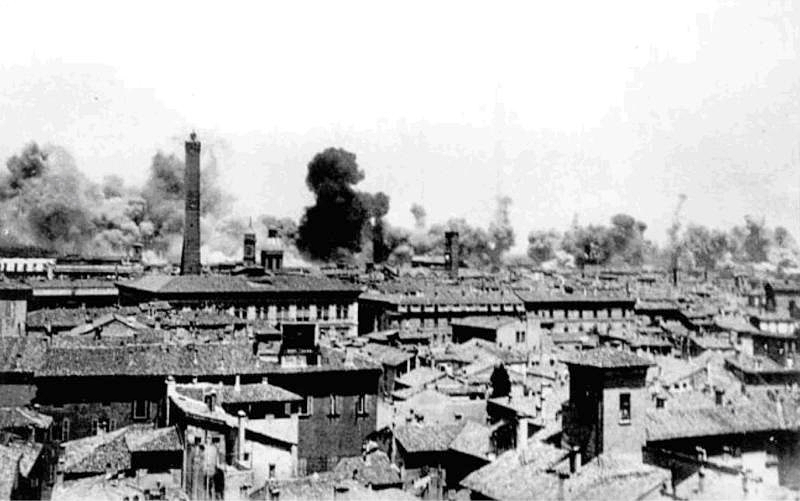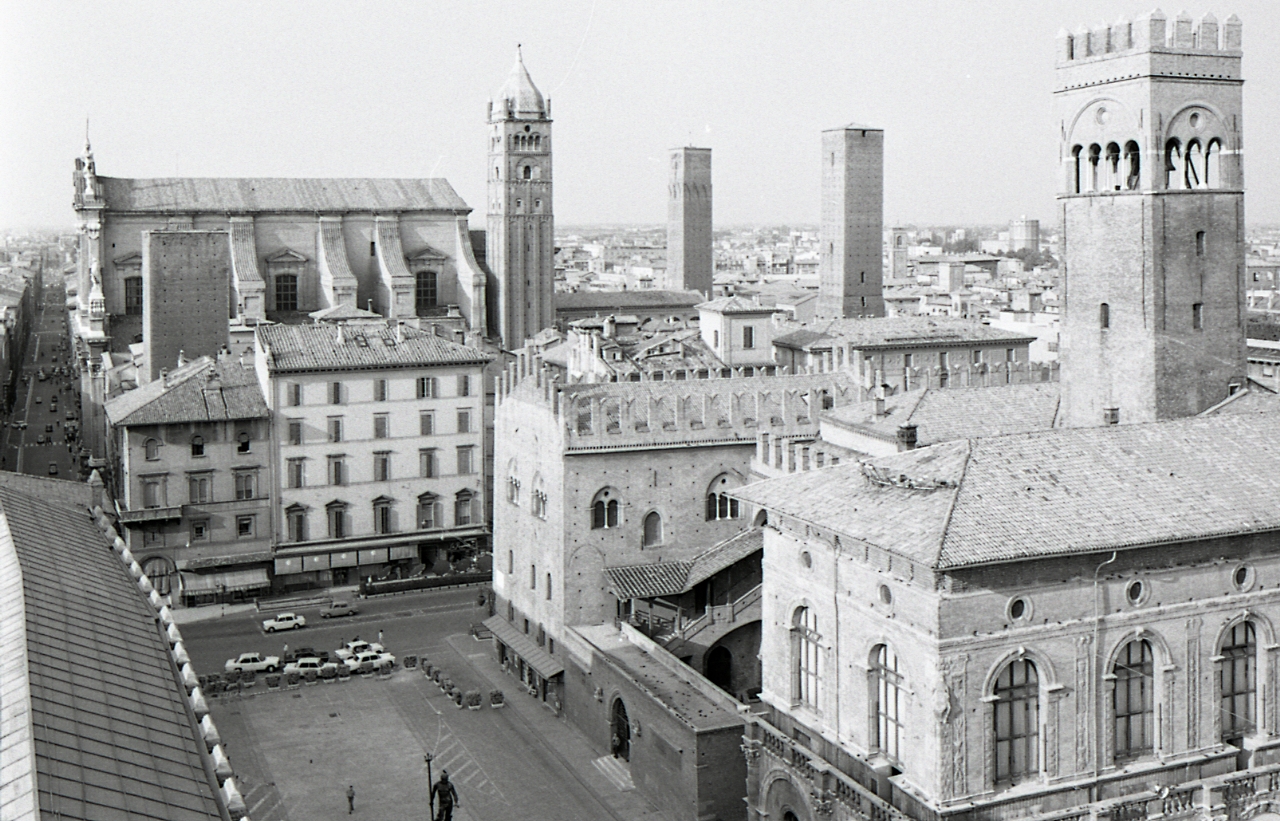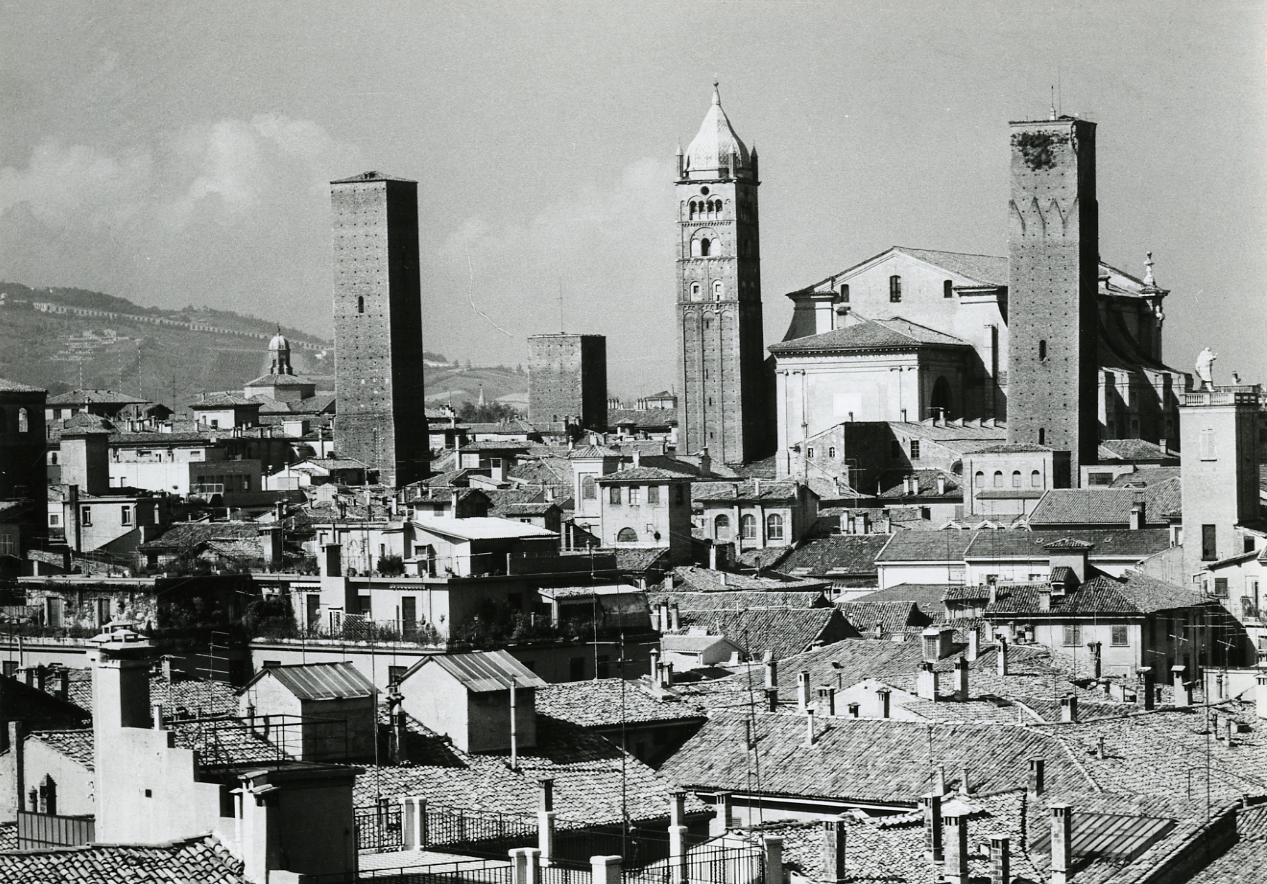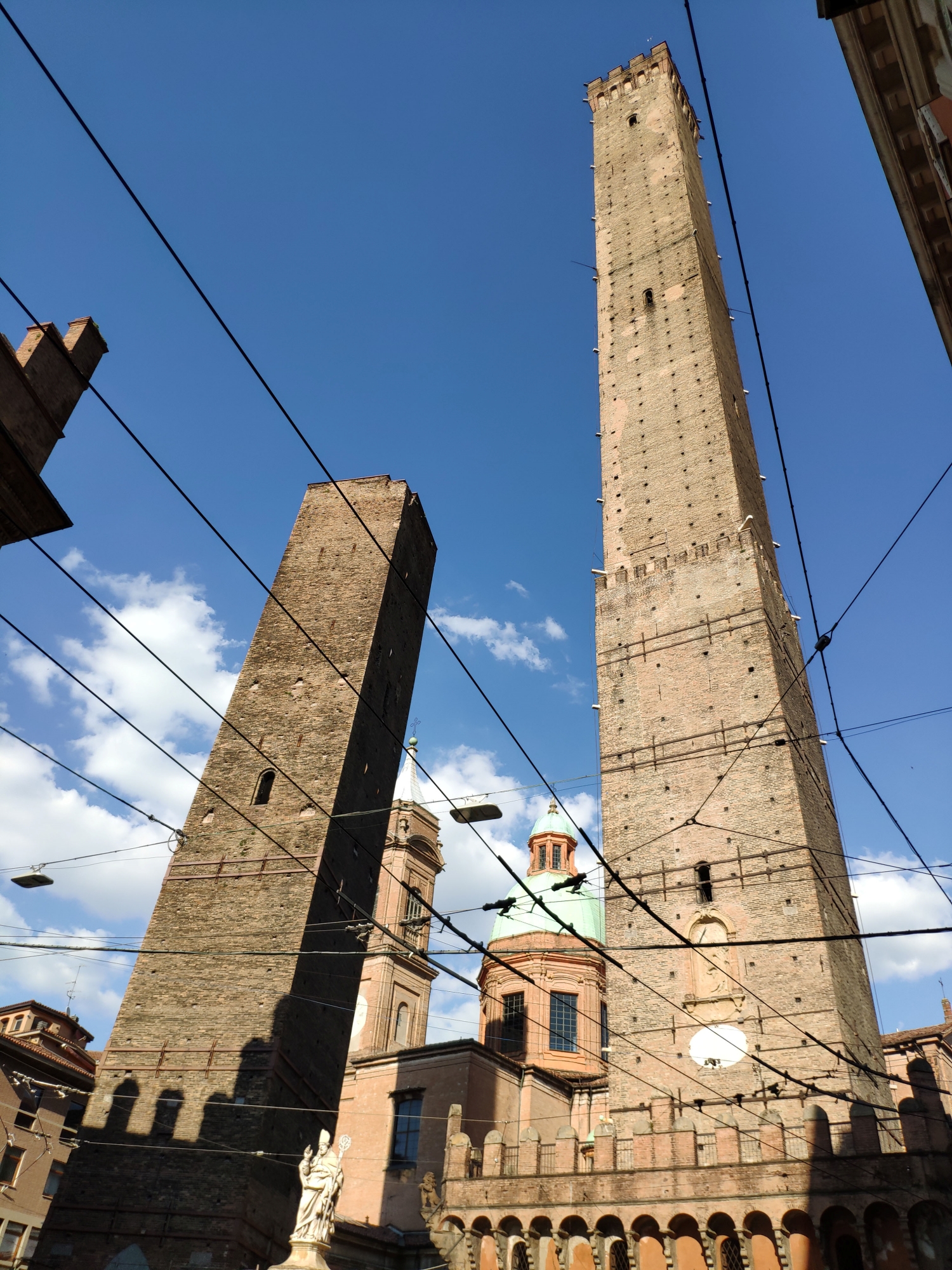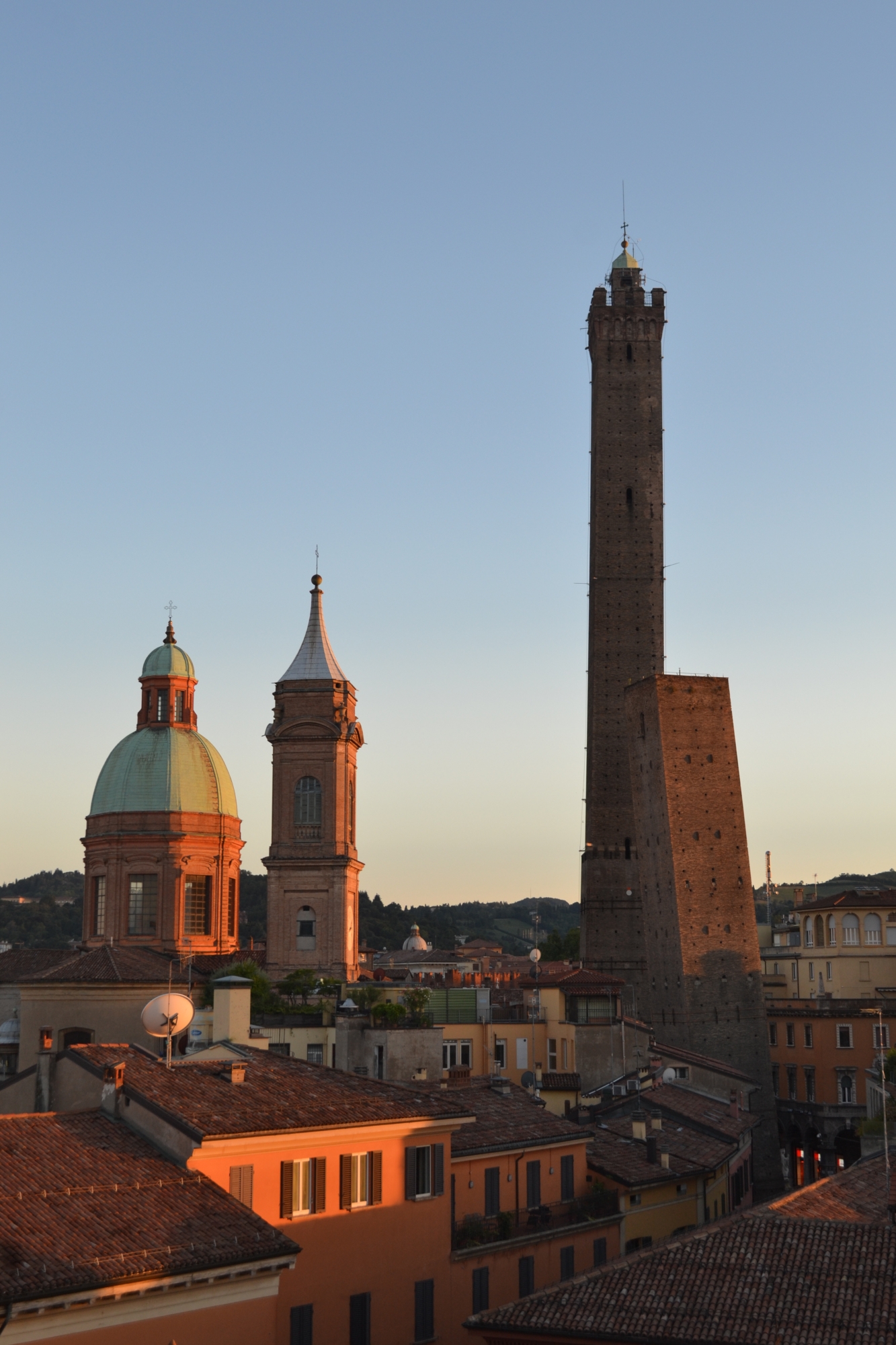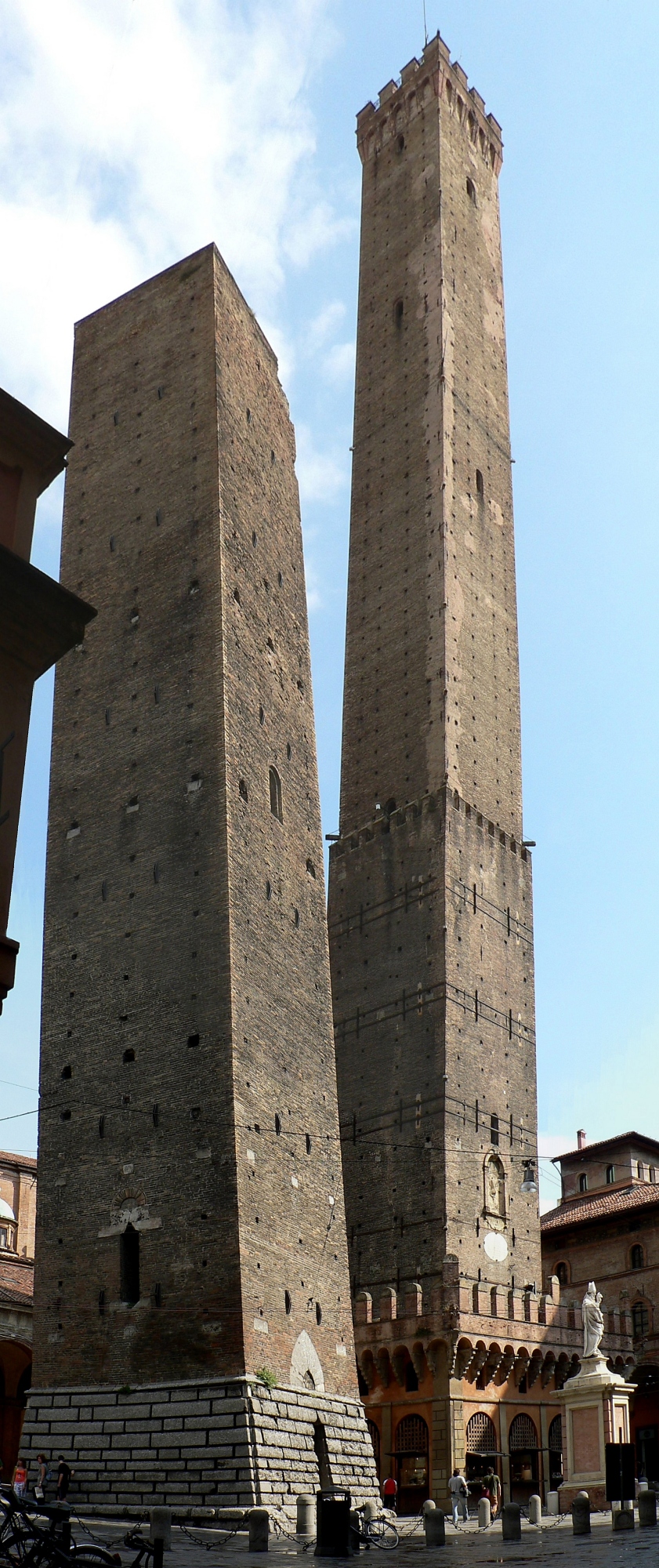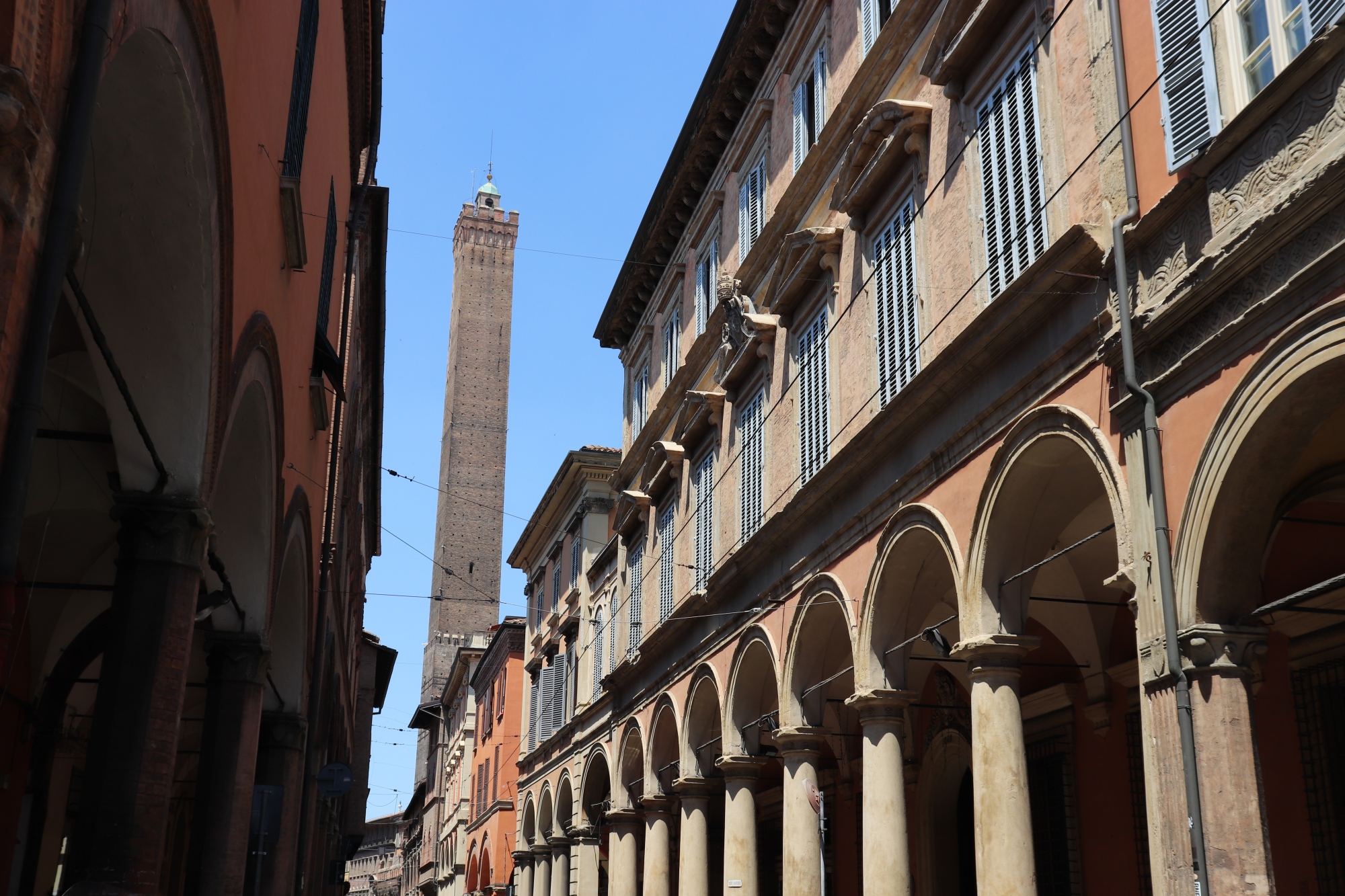The crooked towers are one of the most recognisable symbols of Bologna. The Garisenda and Asinella, as they are named, were built in the early 12th century. They are residential and defensive structures and this type of structure was erected throughout the city during the Middle Ages. According to various sources, during the peak of these structures, i.e. between the 12th and 13th centuries, there may have been between 80 and as many as ca. 180 such towers
They were built as defensive constructions in a situation of permanent danger during a period of constant wars and local clashes between the Guelph and Gibelin sides. Each of the more powerful Bolognese families sought to protect themselves in this way against enemies – both external and internal. Despite their name, these towers were difficult to live in due to the cramped and awkward disposition of the rooms. They mainly held family treasures, family documents, grants and privileges, as well as supplies needed in case of a short-lived siege. Over time, the defensive functions of the towers began to recede into the background and the size of the buildings, especially their heights, were regarded only as a testimony to the power of the family
Panorama of Bologna and the crooked towers. Photo by AnetaMalinowska, CC BY-SA 4.0, via Wikimedia Commons
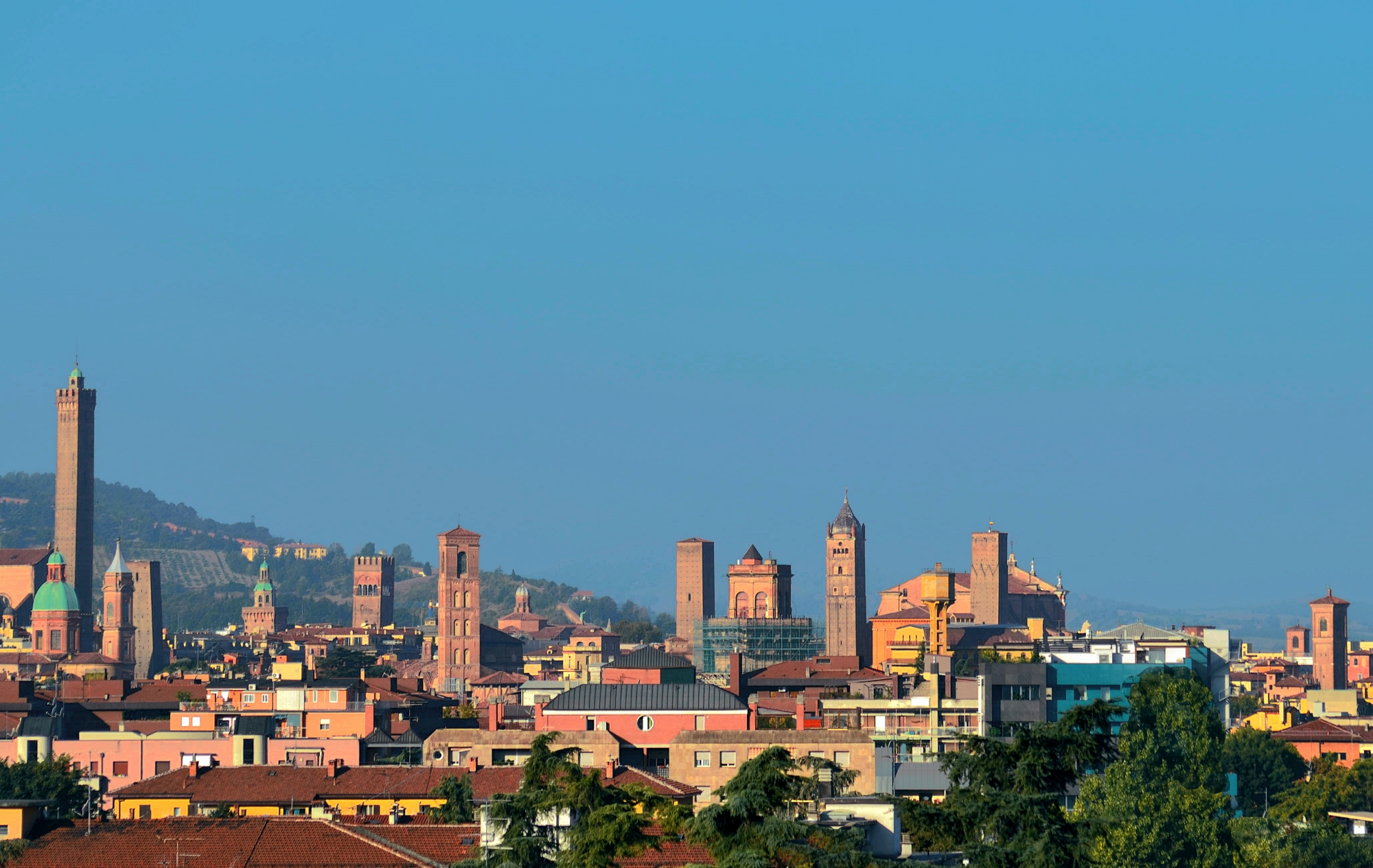
Already from the end of the 13th century, the towers, troublesome to maintain and occupying a valuable place in the city, began to disappear from the landscape of Bologna. Some of them, unmaintained, fell apart on their own, while others were dismantled in advance by their owners. This trend continued until the early 20th century. Approximately 20 towers survive to this day. They were all built according to a similar pattern. They were square (or close to square) in plan and usually between 25 and 30 metres high. Only a few reached higher. The 5-10 m deep foundations were set on wooden piles driven into the ground. The foundations were often built from blocks of a crystalline variety of gypsum, called selenite, found near the city. The walls were erected in a manner typical of the Middle Ages: the space between the rather thin outer and inner brick walls was filled with rubble and stones mixed with lime mortar. The construction of a 60 m high tower could take from 3 to even 10 years. The series of square holes, visible on the outer walls, are the places left by the supports on which the wooden scaffolding was laid
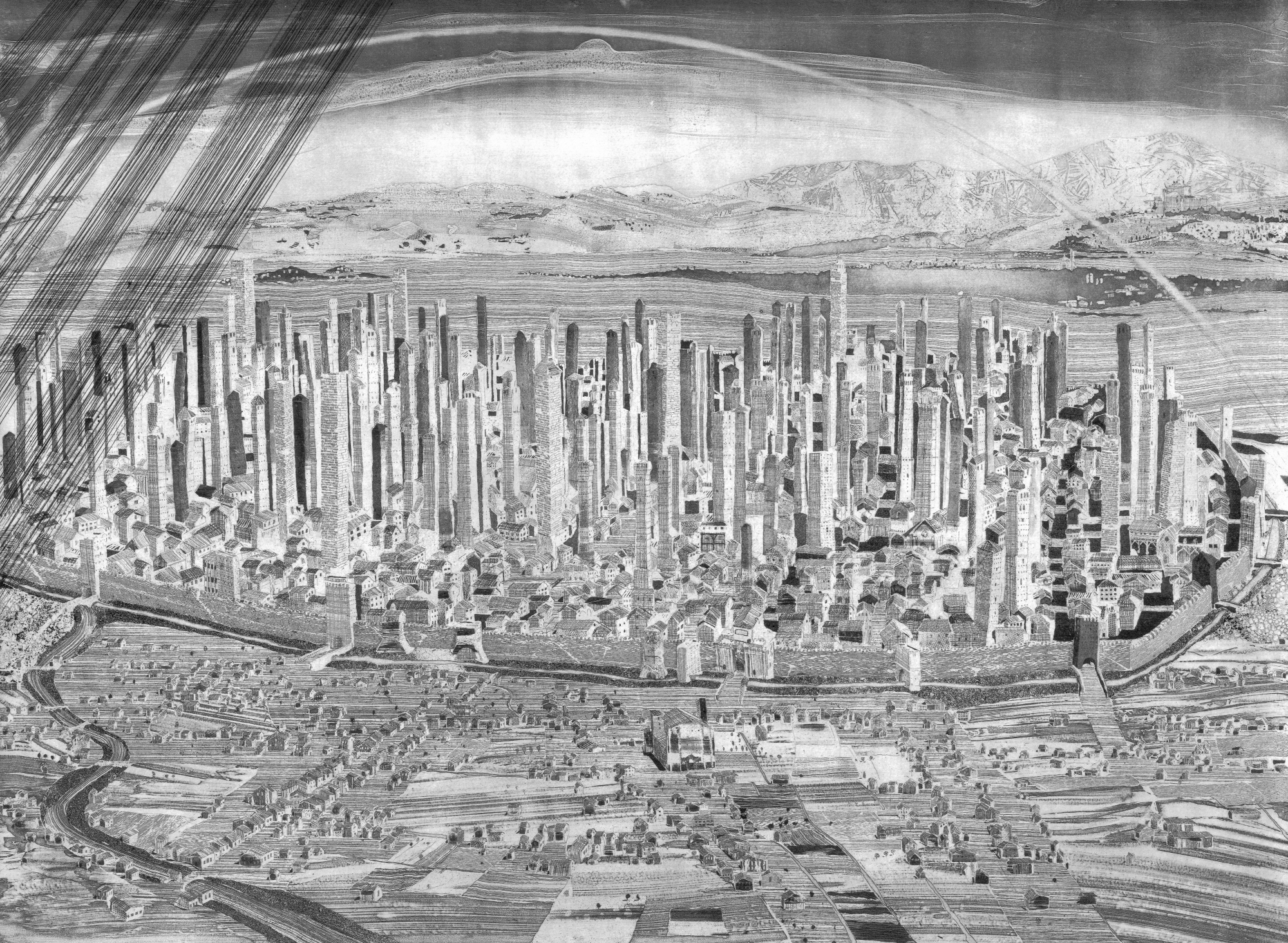
The most famous towers in Bologna are the Asinella and Garisenda – known as the ‘crooked towers of Bologna’. The exceptionally tall Asinella tower is the tallest surviving residential tower in the city. It was built between 1109 and 1119 by Gerhard Asinella of the Gibelline party. The tower’s deviation from the vertical in a westerly direction was caused by a landslide of the foundations partly during its construction and partly after its completion. It currently stands at 2.23 m (approx. 1º 18′) and is not increasing. The Garisendi tower was built at the same time as Asinella. Erected by Philip and Odd Garisendich, it was intended to rival its neighbour in height. Already during construction, however, the foundations slipped and the tower, which had reached about 60 metres, leaned considerably. To prevent it from collapsing, it was lowered to its current height of 48 m in 1351. The deviation from the vertical is 3.22 m (i.e. about 3º 50′) and is nearly three times that of Asinelli. At the end of the 20th century, in order to strengthen the structure, the tower was braced on two levels with steel bands
The second-highest surviving tower in Bologna is the Torre Altabella, standing near San Pietro Cathedral. It is 61 metres high and maintains a perfect verticality. The buildings luckily survived the heavy bombardment of Bologna during the Second World War, when almost half of the city’s buildings were destroyed
The part of the city around the medieval towers was recently cordoned off due to concerns about the technical condition of the lower tower. Sensors placed on the structure, which is more than 900 years old, detected a ‘worrying’ movement in its structure that raised concerns about its stability
Source: bologna.co.uk
Read also: Architecture | Monument | City | History | Italy | Interesting facts


